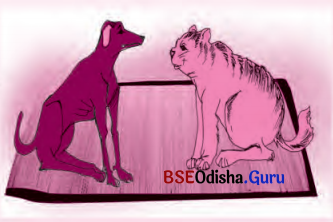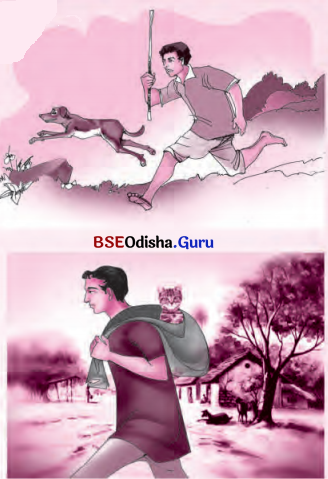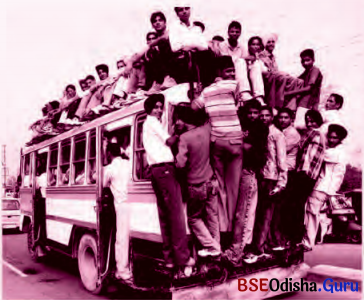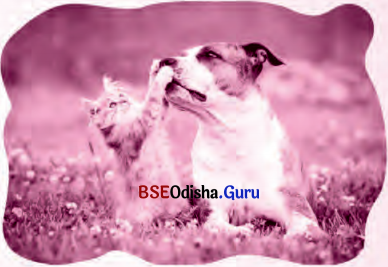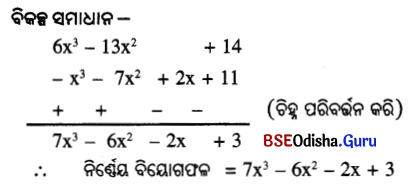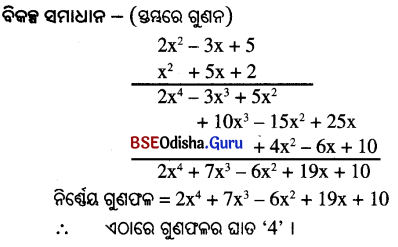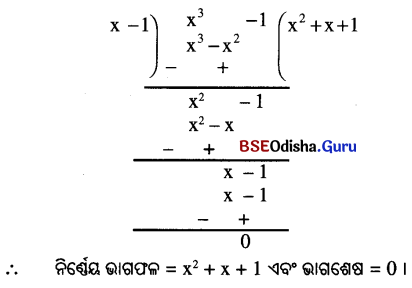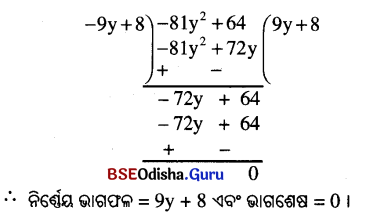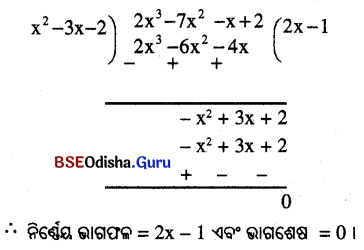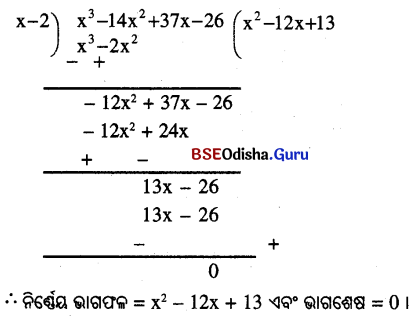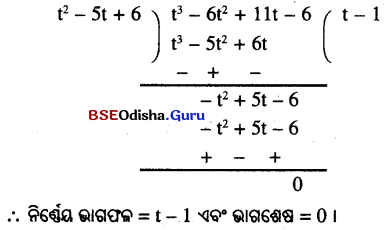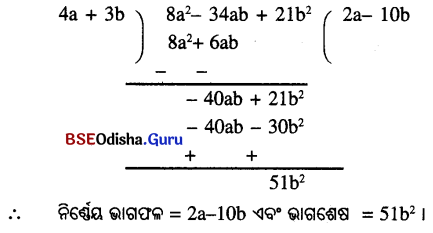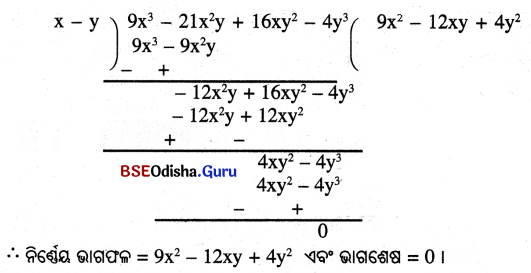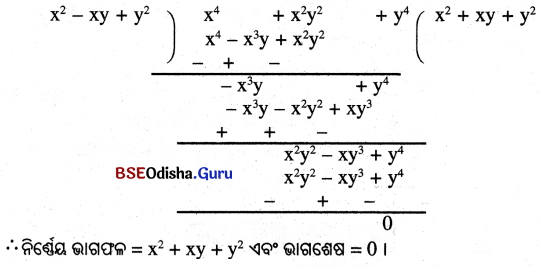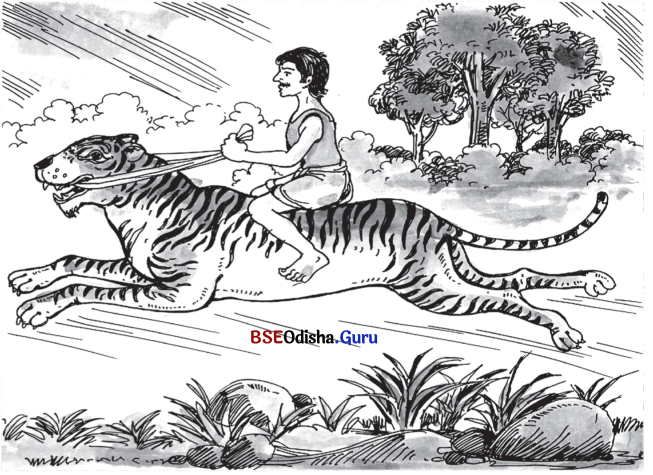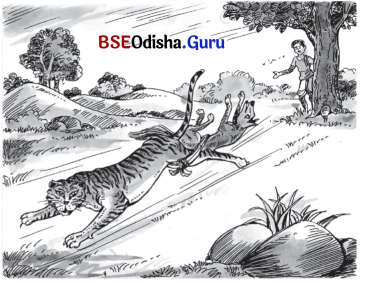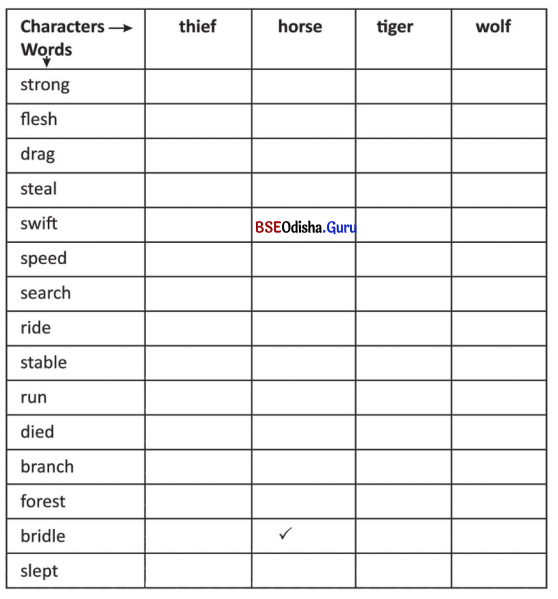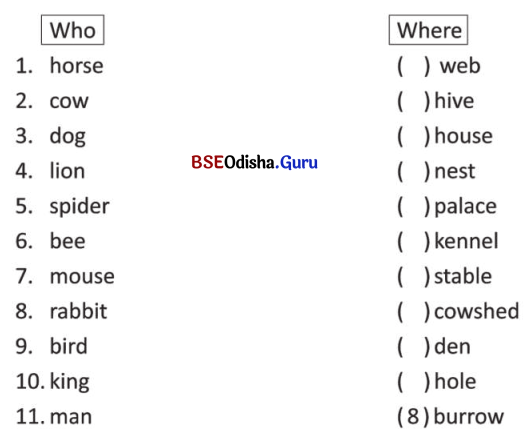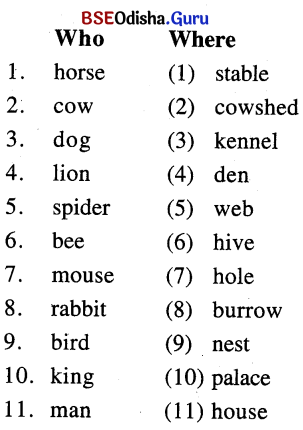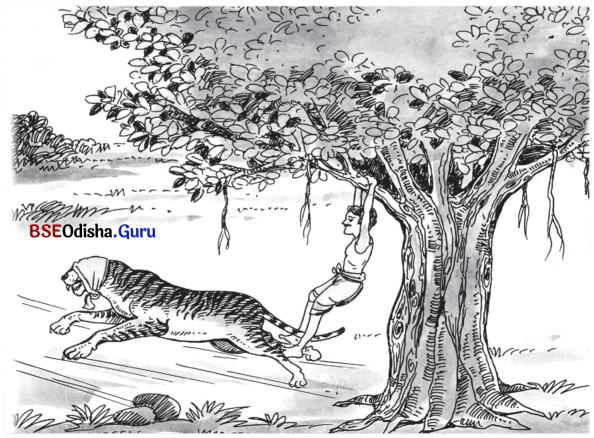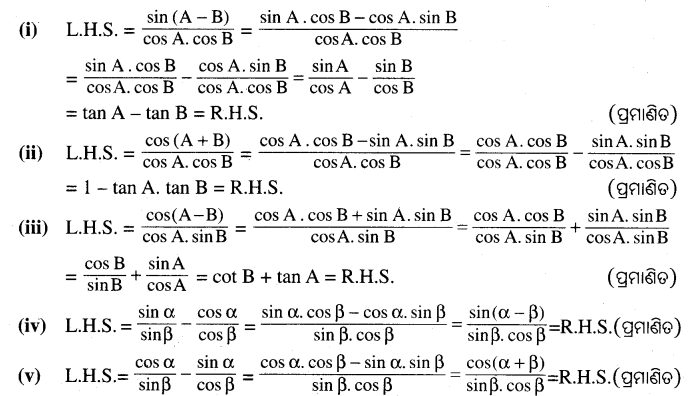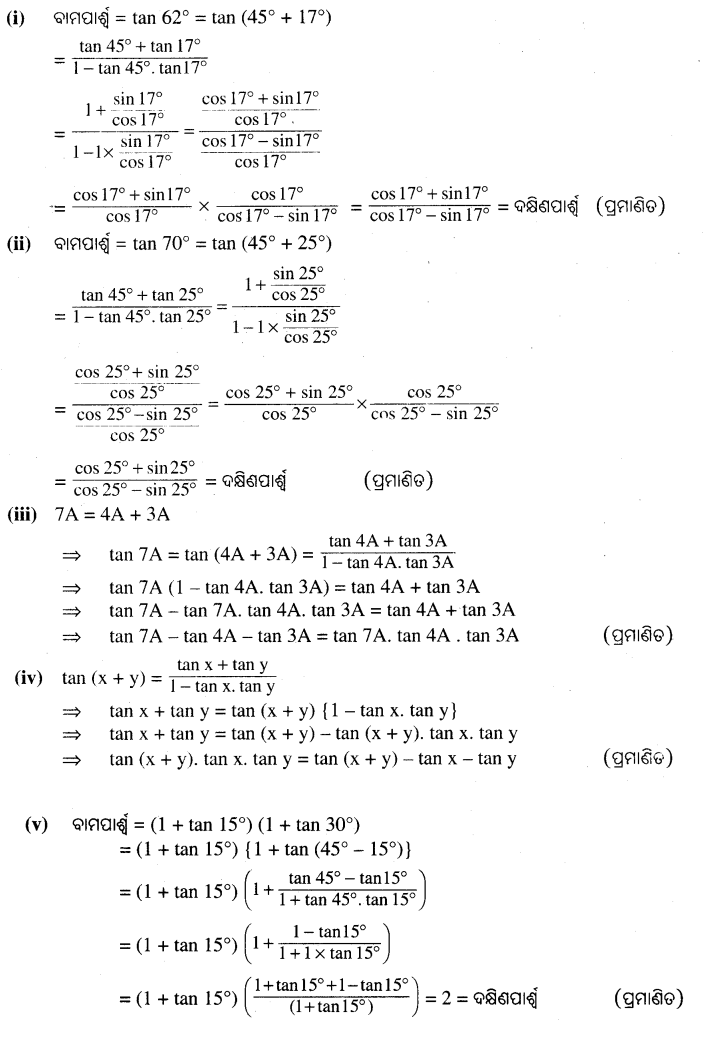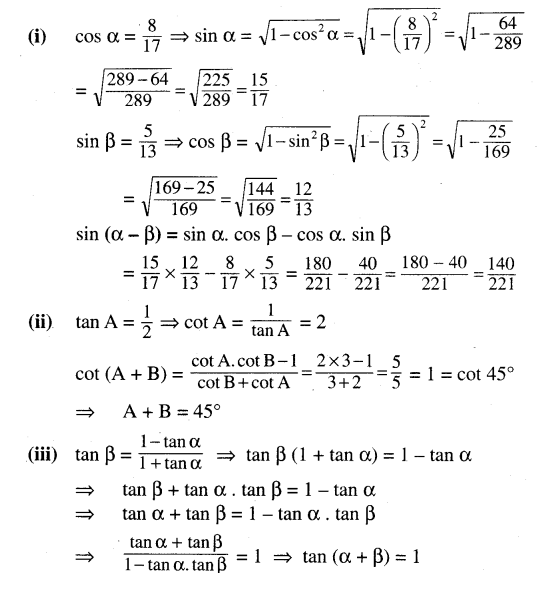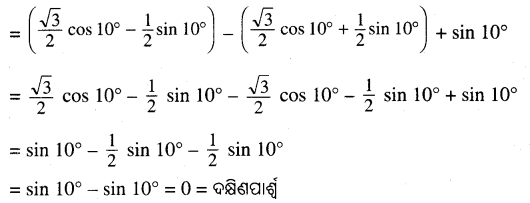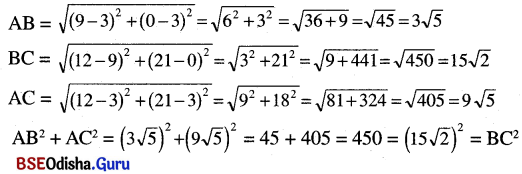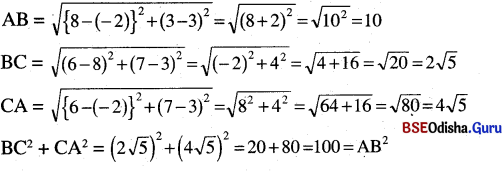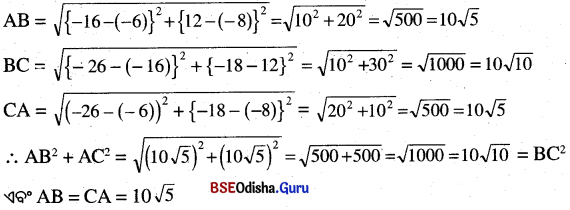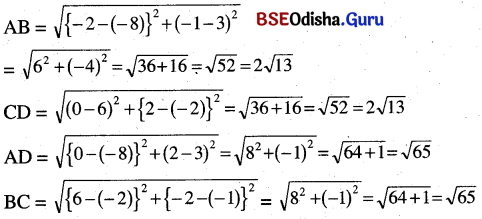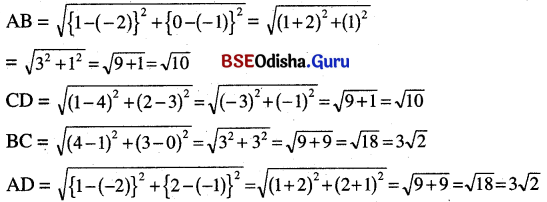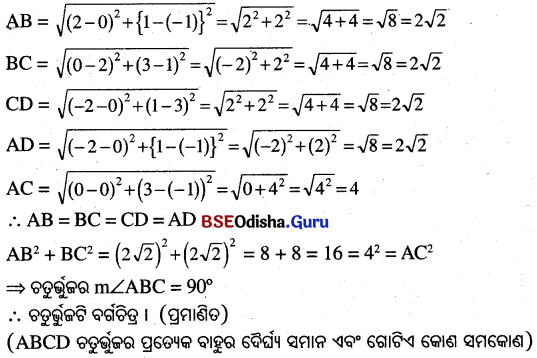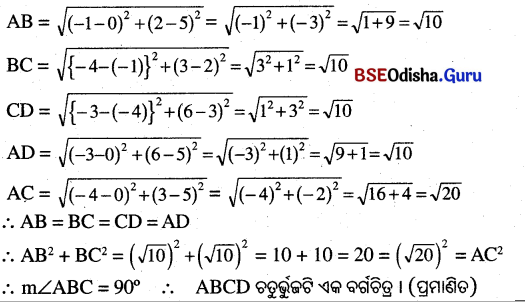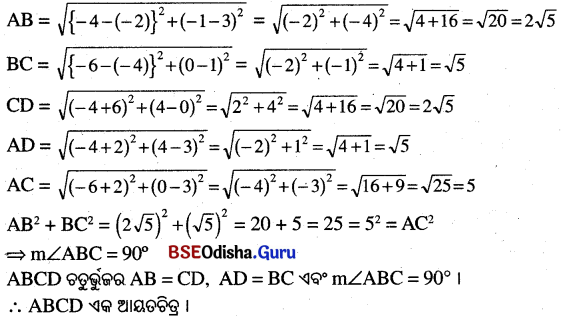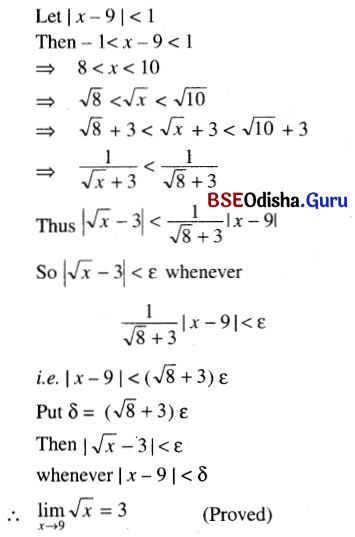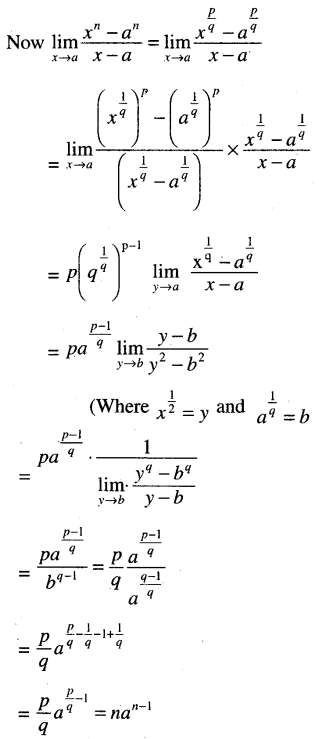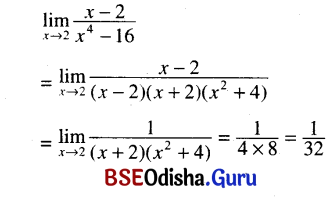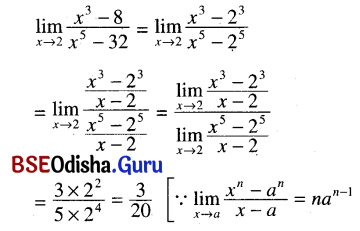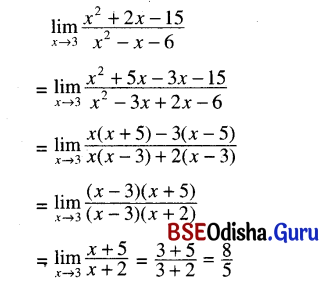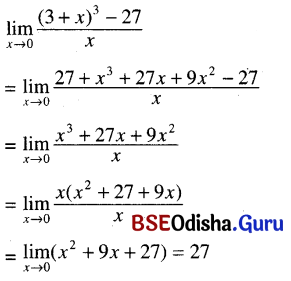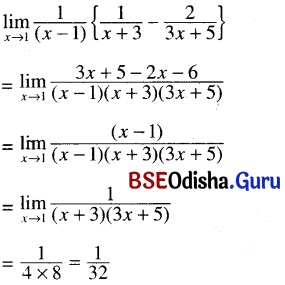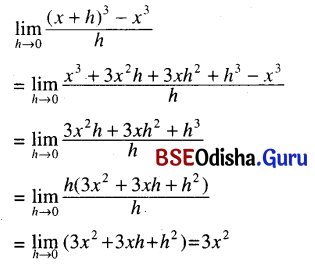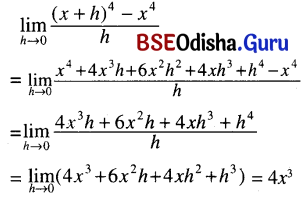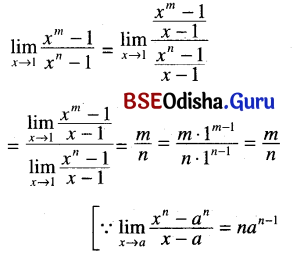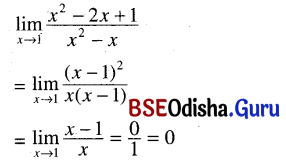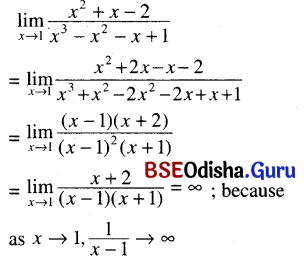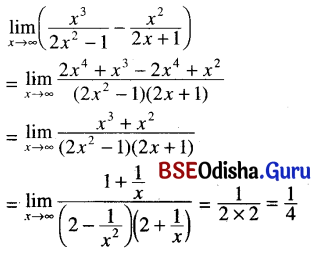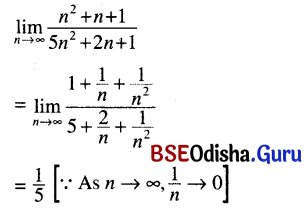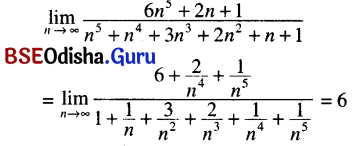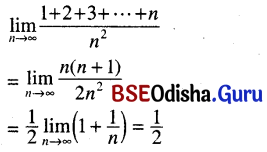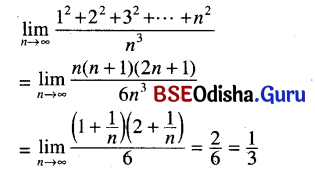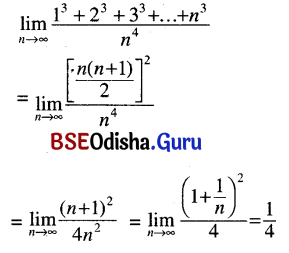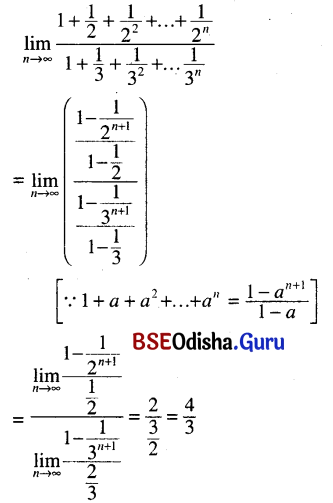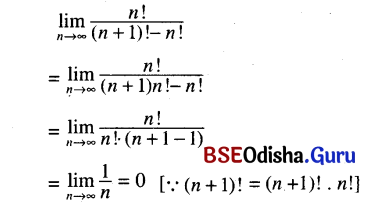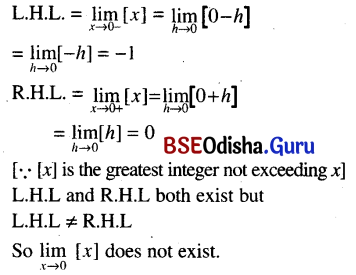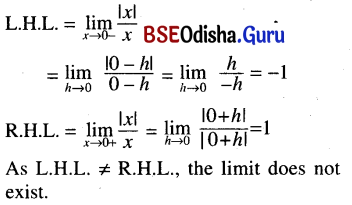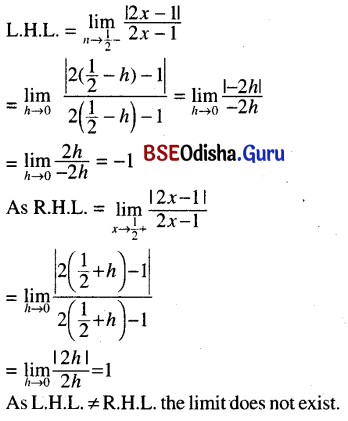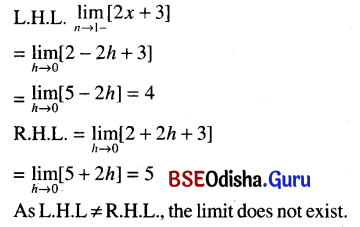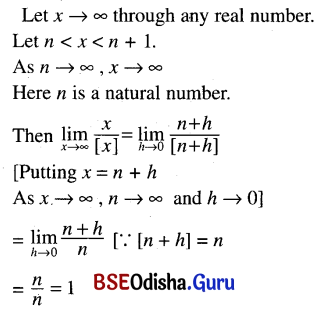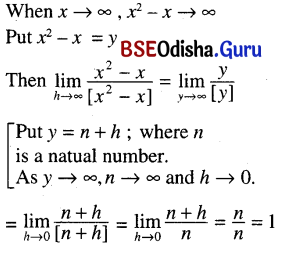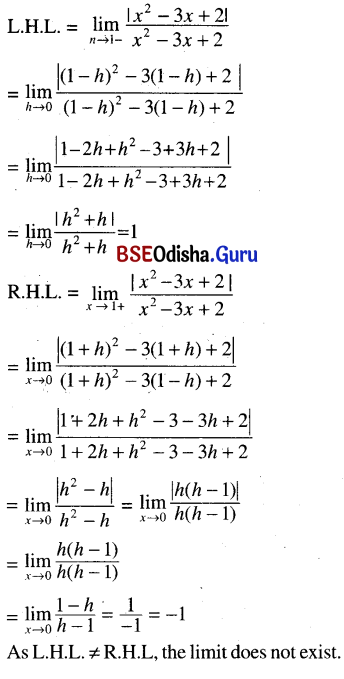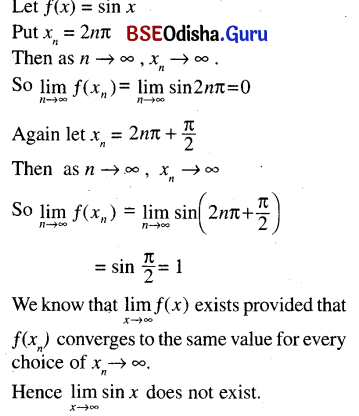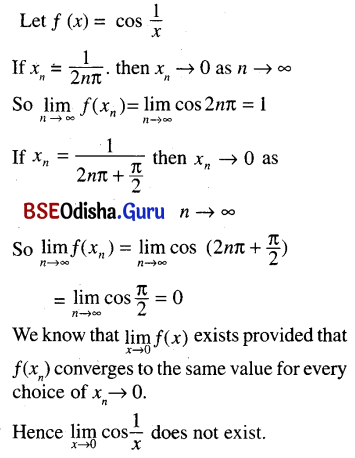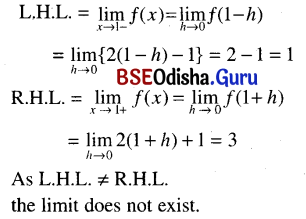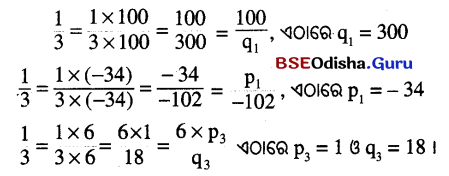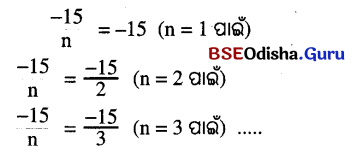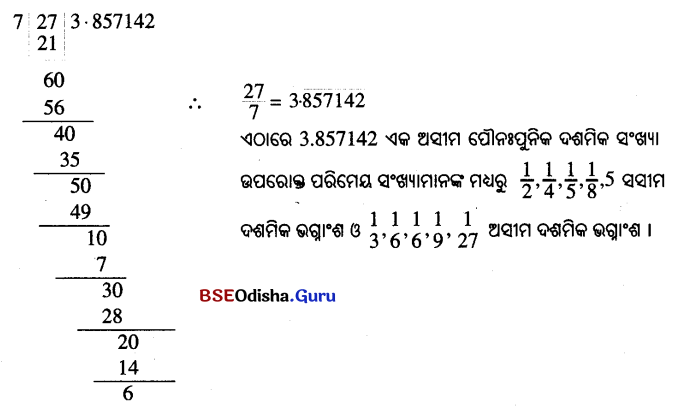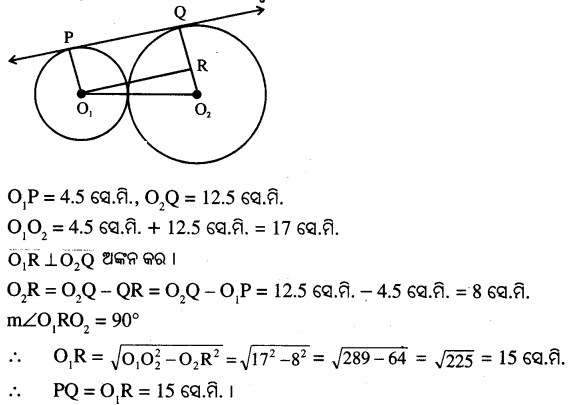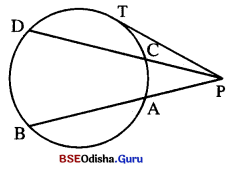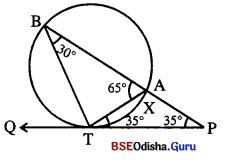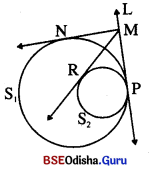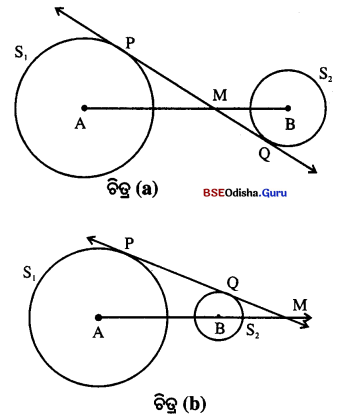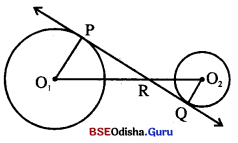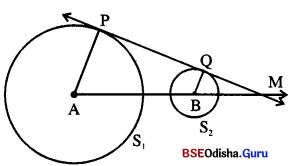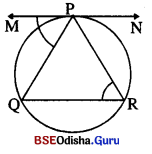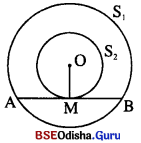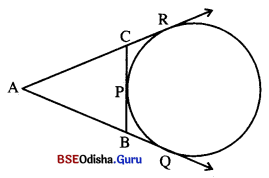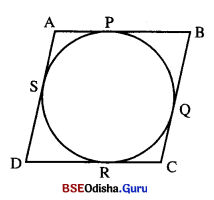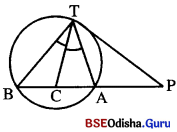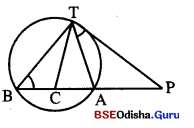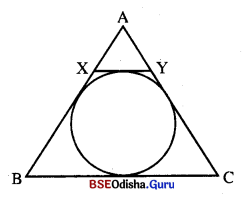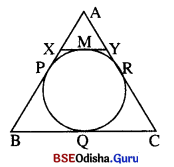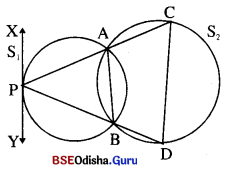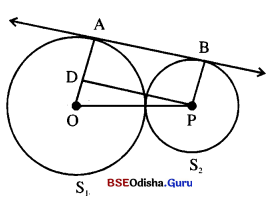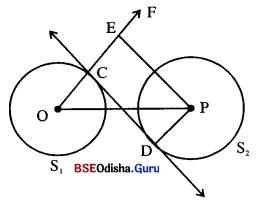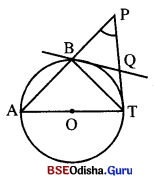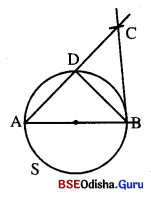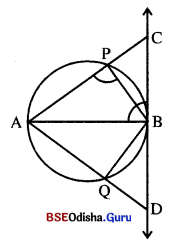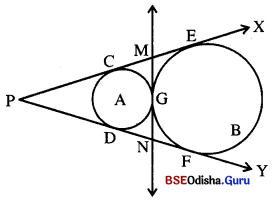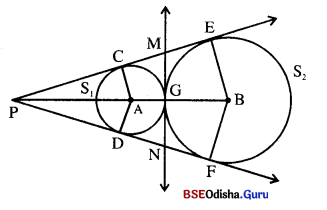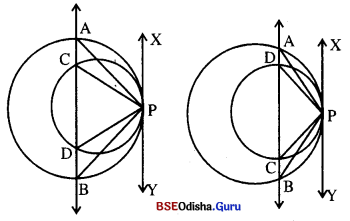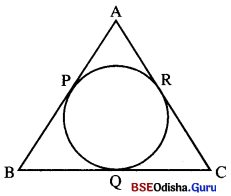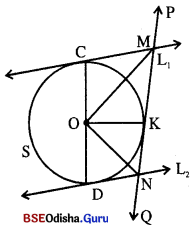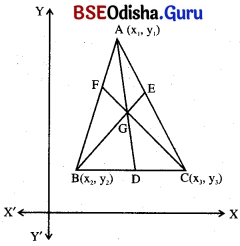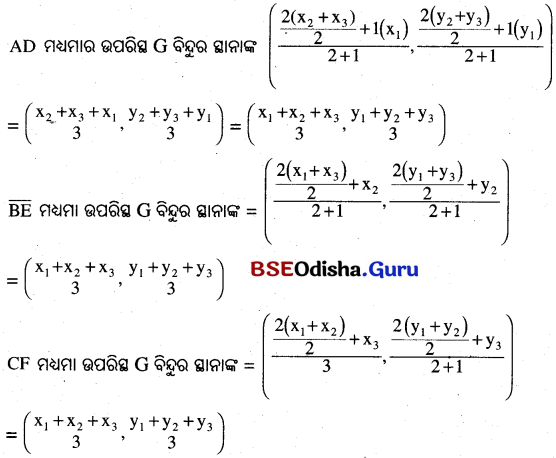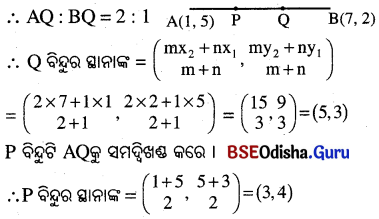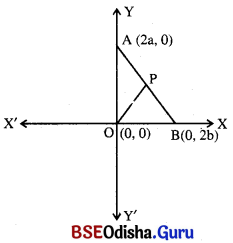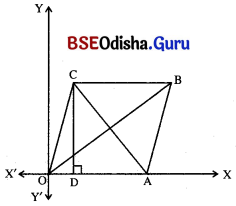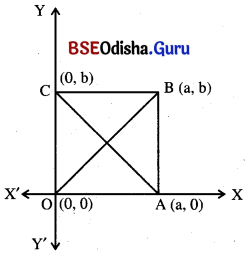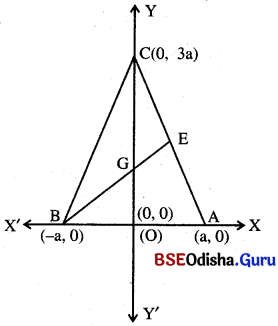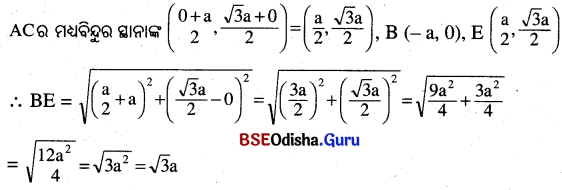Odisha State Board BSE Odisha 7th Class English Solutions Lesson 2 The Jackal and the Rooster Textbook Exercise Questions and Answers.
Class 7th English Chapter 2 The Jackal and the Rooster Question Answers BSE Odisha
The Jackal and the Rooster Class 7 Questions and Answers
Session – 1 (ପ୍ରଥମ ପର୍ଯ୍ୟାୟ)
I.Pre-Reading (ପୂର୍ବ-ପଠନ |)
→Socialization ( ସାମାଜିକୀକରଣ)
Look at the picture. (ଚିତ୍ରଟିକୁ ଧାନର ସହିତ ଲକ୍ଷ୍ୟକର)
→ What is the rooster doing? (ଗଞ୍ଜାଟି କ’ଣ କରୁଛି ?)
Answer:
The rooster is sitting in a high place and watching the jackal carefully.
Look at the second picture. (ଦ୍ଵିତୀୟ ଛବିକୁ ଦେଖ)
→ Who is the jackal carrying away? (କୋକିଶିଆଳ କ’ଣ ନେଇ ଚାଲିଯାଉଛି ? )
Answer:
The jackal is carrying away the rooster.
→ Why are people chasing after the jackal?
(ଲୋକମାନେ କୋକିଶିଆଳ ପଛରେ କାହିଁକି ଗୋଡ଼ାଉଛନ୍ତି ?)
Answer:
The people are chasing after the jackal to free the rooster.
→ How did the rooster escape from the jackal?
(ଗଞ୍ଜାଟି କୋକିଶିଆଳ କବଳରୁ କିପରି ମୁକୁଳିଗଲା ?)
Answer:
The rooster tricked the jackal and escaped from it.
![]()
Read the story to get answers to these questions.
(ଗପଟିକୁ ପାଠ କର ଏବଂ ଏସବୁ ପ୍ରଶ୍ନର ଉତ୍ତର ପାଅ ।)
II. While Reading (ପଠନ କାଳୀନ):
Text (ପାଠ୍ୟବସ୍ତୁ):
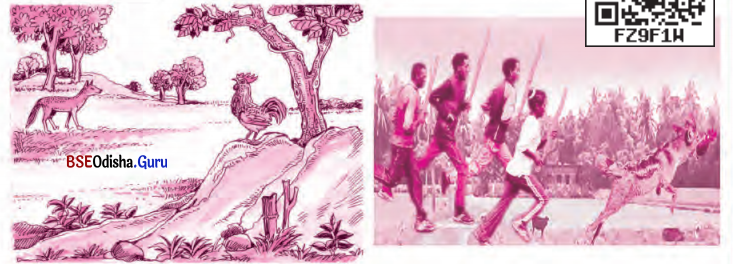
• SGP-1 (Sense Group Paragraph-1)
• Read para – 1 and 2 silently and answer the questions that follow.
(୧ମ ଓ ୨ୟ ଅନୁଚ୍ଛେଦକୁ ନୀରବରେ ପାଠ କର ଏବଂ ନିମ୍ନ ପ୍ରଶ୍ନଗୁଡିକର ଉତ୍ତର ଦିଅ ।)
1. There was a very big and handsome rooster. He looked like a king with his beautiful red crown. He also felt like a king. He got up very early in the morning, sat in a high place, and sang non-stop-cock-koo-doodle doo, cock-koo-doodle doo. He knew that his song was much better than the songs of the other roosters in his locality. But he wanted to make his song still better, louder, and clearer. But how to do this was his problem. It was a problem till a jackal suggested a way out.
2. The jackal saw the rooster singing every day early in the morning. But it sang keeping his eyes open. If he would try to catch the rooster, the rooster would fly away to the tree. This was what happened the other day when he tried to catch a rooster. So he came to the rooster and said, “Oh great, handsome, king-like rooster! Your song will be really nice if you sing closing your eyes.”
ଓଡ଼ିଆ ଅନୁବାଦ
୧. ଗୋଟିଏ ବୃହଦାକାୟ ସୁନ୍ଦର ଗଞ୍ଜା ଥିଲା । ତା’ର ସୁନ୍ଦର ନାଲି ଚୂଳ ମୁକୁଟ ସଦୃଶ ଏବଂ ରାଜକୀୟ ଥିଲା । ସେ ମଧ୍ୟ ରାଜାପରି ଅନୁଭବ କରୁଥିଲା । ସେ ଖୁବ୍ ସକାଳରୁ ଉଠୁଥିଲା, ଗୋଟିଏ ଉଚ୍ଚ ଜାଗାରେ ବସୁଥିଲା ଏବଂ ନିରବଚ୍ଛିନ୍ନ ରାବ କରୁଥିଲା-କଲ୍ରେ-କୋ-ଡୁଡୁଲ୍ -ଡୋ-କକ୍କୋ -ଡୋଡୋଲ୍ -ଡୁ-….. ଜାଣିଥିଲା ଯେ ତା’ର ଗାନ ତା’ ଅଞ୍ଚଳର ଅନ୍ୟ ସମସ୍ତ ଗଞ୍ଜାମାନଙ୍କ ଗାନଠାରୁ ଅଧିକ ଭଲ ଥିଲା । ତଥାପି ତା’ଗାନକୁ ସେ ଆହୁରି ଅଧିକ ଭଲ କରିବାକୁ ଚାହୁଁଥିଲା ସ୍ବରର ଉଚ୍ଚତାରେ ଏବଂ ସ୍ପଷ୍ଟତାରେ । କିନ୍ତୁ କିଭଳି ଏପରି କରିବ, ତା’ପାଇଁ ସମସ୍ୟା ଥିଲା । ଏହା ତାକୁ ଏକ କୋକିଶିଆଳ ମାର୍ଗଦର୍ଶନ ଦେବା ପର୍ଯ୍ୟନ୍ତ ସମସ୍ୟା ଥିଲା ।
୨. କୋକିଶିଆଳଟି ଗଞ୍ଜାଟିକୁ ପ୍ରତ୍ୟହ ବଡ଼ିଭୋରରୁ ଗାନ କରୁଥିବାର ଲକ୍ଷ୍ୟ କଲା । କିନ୍ତୁ ସେ ଗାନ କଲାବେଳେ ଆଖୁକୁ ଖୋଲା ରଖୁଥିଲା । ଯଦି କେତେବେଳେ ସେ ଗଞ୍ଜାଟିକୁ ଧରି ନେବାକୁ ଚେଷ୍ଟା କରୁଥିଲା, ଗଞ୍ଜାଟି ତତ୍କ୍ଷଣାତ୍ ଗଛ ଉପରକୁ ଉଡ଼ି ଯାଉଥିଲା । ଆଉ ଗୋଟିଏ ଦିନ ମଧ୍ୟ ସେହିଭଳି ପୁନର୍ବାର ଘଟିଲା ଠିକ୍
ଯେତେବେଳେ ସେ ଗଞ୍ଜାଟିକୁ ଧରିବାକୁ ପୁନର୍ବାର ଚେଷ୍ଟା କରିଥିଲା । ତେଣୁ କୋକିଶିଆଳଟି ମନରେ ଉପାୟ ପାଞ୍ଚ୍ ଗଞ୍ଜା ପାଖକୁ ଆସିଲା ଏବଂ କହିଲା, ‘ହେ ମହାନ୍ ସୁନ୍ଦର ରାଜତୁଲ୍ୟ ଗଞ୍ଜା ।’ ତୁମର ଗାନ ବାସ୍ତବିକ ଅତୀବ ସୁନ୍ଦର ହେବ ଯଦି ତୁମେ ଆଖୁ ବନ୍ଦ କରି ଗାନ କରିବ ।
Notes And Glossary (ଶବ୍ଦାର୍ଥ):
handsome ( ପ୍ୟାଣ୍ଟ୍ସମ୍ ) – ସୁନ୍ଦର
rooster (ରୁଷ୍ଟର୍) – ଗଞ୍ଜା
beautiful (ବିଉଟିଫୁଲ୍) – ସୁନ୍ଦର
red crown (ରେଡ୍ କ୍ରାଉନ୍) – ନାଲି ମୁକୁଟ (ଚୂଳ)
felt (ଫେଲ୍ଟ) – ଅନୁଭବ କଲା
got up (ଗଟ୍ ଅପ୍) – ଉଠୁଥିଲା
early in the morning (ୟର୍ଲି ଇନ୍ ଦ ମଣ୍ଡିଙ୍ଗ୍)
sat (ସ୍ୟାଟ୍) – ବସୁଥିଲା
high place (ହାଇ ପ୍ଲେସ୍) – ଉଚ୍ଚ ଜାଗା
non-stop (ନନ୍-ଷ୍ଟପ୍ ) – ବନ୍ଦ ହେଉନଥୁବା
cock-koo-doodle doo (କକ୍-କୁ-ଡୁଡଲ୍ ଡୁ)– ଗଞ୍ଜାର ରାବ
much better (ମଚ୍ ବେଟର୍) – ବହୁତ ଭଲ
locality (ଲୋକାଲିଟି) – ଅଞ୍ଚଳ
wanted (ୱାଣ୍ଡେଡ୍) – ଇଚ୍ଛା କରୁଥିଲା | ଚାହୁଁଥିଲା
still better (ଷ୍ଟିଲ୍ ବେଟର୍) – ଅଧିକ ଭଲ
louder and clearer (ଲାଉଡ଼ର୍ ଆଣ୍ଡ୍ କ୍ଲିଅରର)
problem (ପ୍ରୋବ୍ଲେମ୍ ) – ସମସ୍ୟା
suggested (ସଜେଷ୍ଟେଡ୍) – ପ୍ରସ୍ତାବ ଦେଲେ
a way (ଏ ୱେ) – ଗୋଟିଏ ଉପାୟ
everyday (ଏଗ୍ରିଡ଼େ) – ପ୍ରତ୍ୟେକ ଦିନ
keeping (କିପିଙ୍ଗ୍) – ରଖୁ
open (ଓପନ୍) – ଖୋଲା
try (ଟ୍ରାଏ) – ଚେଷ୍ଟା କରିବା
to catch (ଟୁ କ୍ୟାଚ୍) – ଧରିବାକୁ
fly away (ଫ୍ଲାଏ ଆଷ୍ଟ୍ରେ) – ଦୂରକୁ ଉଡ଼ିଯିବା
happened (ହାପେନ୍ଡ୍) – ଘଟିଥିଲା
catch (କ୍ୟାଚ୍) – ଧରିବା
Oh great (ଓ ଗ୍ରେଟ୍ ) – ହେ ମହାନ୍
handsome (ହ୍ୟାଣ୍ଡସମ୍ ) – ସୁନ୍ଦର
closing (କ୍ଲୋଜିଙ୍ଗ୍) – ବନ୍ଦକରି
![]()
Comprehension Questions (ବୋଧପରିମାପକ ପ୍ରଶ୍ନବଳୀ):
Question 1.
Who are there in the story?
(ଗପଟିରେ କିଏ କିଏ ଅଛନ୍ତି ?
Answer:
The jackal and the rooster are there in the story.
Question 2.
What was the rooster like?
( ଗଞ୍ଜାଟି କିପରି ? )
Answer:
The rooster was handsome and king-like.
Question 3.
What did it do early in the morning?
(ବଡ଼ି ସକାଳୁ ଗଞ୍ଜାଟି କ’ଣ କରୁଥିଲା ?)
Answer:
The rooster sang non-stop cock-koo-doodle-doo every early morning sitting on a high place.
Question 4.
What did it know?
(ସେ (ଗଞ୍ଜାଟି) କ’ଣ ଜାଣିଥିଲା ?)
Answer:
It (the rooster) knew that his song was unique ( ଅସାଧାରଣ ) in sweetness and sound in his locality.
Question 5.
Is it true that the rooster’s song was better than the songs of other roosters?
(ଏହା କ’ଣ ସତ ଯେ, ଗଞ୍ଜାଟିର ଗାନ ତା’ ଅଞ୍ଚଳର ଅନ୍ୟ ଗଞ୍ଜାମାନଙ୍କ ଗାନଠାରୁ ଉତ୍କୃଷ୍ଟ ଥୁଲା )
Answer:
No, the song of the rooster was not so better than the song of the other roosters of his locality.
Question 6.
What did it want its song to be?
(ସେ ତା’ ଗାୟନ (ଗାଇବା)କୁ କିଭଳି କରିବାକୁ ଚାହୁଁଥିଲା ? )
Answer:
It wanted its song to be sweeter, louder and clearer.
Question 7.
Did it know how to do this ?
(ସେ କ’ଣ ତାହା କିପରି କରିବାକୁ ହେବ ଜାଣିଥିଲା ?)
Answer:
No, it not at all knew how to do this.
Question 8.
The jackal thought the rooster would fly away if it tried to catch it. Why?
(କୋକିଶିଆଳ ଜାଣିଥିଲା ଯେ, ଯଦି ସେ ଗଞ୍ଜାକୁ ଧରିବାକୁ ଚେଷ୍ଟା କରିବ, ସେ ତତ୍କ୍ଷଣାତ୍ ଉଡ଼ିକରି ଦୂରେଇ ଯିବ । କାହିଁକି ?)
Answer:
The Jackal is a hunter beast of small birds and animals. So he has natural experience (ସ୍ଵାଭାବିକ ଅନୁଭବ) of the latter getting escape in their way.
![]()
Question 9.
Did the jackal have similar experiences before?
(କୋକିଶିଆଳର କ’ଣ ଏକାଭଳି ପୂର୍ବାନୁଭୂତି ଥିଲା ?)
Answer:
Yes, the jackal had a similar experience before. This happened the other day when he tried to catch a rooster.
Question 10.
What did the jackal suggest the rooster make its song better?
(କୋକିଶିଆଳ ଗଞ୍ଜାଟିକୁ ତା’ର ଗାନକୁ ଅଧିକ ସୁମଧୁର କରିବାପାଇଁ କି ପ୍ରସ୍ତାବ ଦେଇଥିଲା ? )
Answer:
The jackal suggested the rooster close his eyes while singing in order to make its song better means sweeter, louder, and clearer.
Question 11.
Why did the jackal call the rooster ‘great, handsome. …?
(କୋକିଶିଆଳ କାହିଁକି ଗଞ୍ଜାଟିକୁ ମହାନ୍, ସୁନ୍ଦର ଇତ୍ୟାଦି ଶବ୍ଦଦ୍ୱାରା ସମ୍ବୋଧୃତ କରିଥିଲା ?)
Answer:
The Jackal is known for its wickedness, so that flattered (ଚାଟୁ କଲା) the rooster to make it his prey (ଶିକାର).
Question 12.
Will the rooster close its eyes and sing? Read the next part and see.
(ଗଞ୍ଜା କ’ଣ ସତରେ ଆଖୁ ବନ୍ଦକରି ଗାନ କଲା ? ପରବର୍ତୀ ଅନୁଚ୍ଛେଦ ପାଠ କର ଏବଂ ଲକ୍ଷ୍ୟ କର ।)
Session – 2 (ଦ୍ଵିତୀୟ ପର୍ଯ୍ୟାୟ):
• SGP-2 (Sense Group Paragraph-2)
• Read para – 3 silently and answer the questions that follow.
(୩ୟ ଅନୁଚ୍ଛେଦକୁ ପାଠ କର ଏବଂ ନିମ୍ନପ୍ରଦତ୍ତ ପ୍ରଶ୍ନଗୁଡ଼ିକର ଉତ୍ତର ଦିଅ ।)
3. The rooster closed his eyes and sang louder and clearer – cock koo-doodle- doo. Then SNAP !! The jackal caught the rooster by its neck and ran away. The owner of the rooster chased behind. His wife and sons joined him. Also joined his neighbors. But the jackal was much ahead of those running behind. The rooster, in the meantime, said, “Mr. Jackal, I’m so happy to be with you. Without walking I’m walking. Without flying, I’m flying. What a great feeling! And my owner is a miser. He never gives me anything to eat. Why don’t you tell this to them ?”
ଓଡ଼ିଆ ଅନୁବାଦ :
୩. ଗଞ୍ଜାଟି ଆଖ୍ ବନ୍ଦ କଲା ଏବଂ ଅଧିକ ଉଚ୍ଚ ସ୍ବରରେ ଏବଂ ସ୍ପଷ୍ଟ ଭାବରେ ଗାଇବାକୁ ଲାଗିଲା- କକ୍କ୍ରେ–କୁ-ଡୁଡୁଲେ-ଡୁ । ତା’ପରେ ଝାମ୍ପ । କୋକିଶିଆଳ ଗଞ୍ଜାଟିକୁ ବେକ ପାଖରୁ ଧରି ପକାଇଲା ଏବଂ ଦୌଡ଼ି ପଳାଇବାକୁ ଲାଗିଲା । ଗଞ୍ଜାର ମାଲିକ ପଛେ ପଛେ ଗୋଡ଼ାଇଲା । ତା’ର ସ୍ତ୍ରୀ ଓ ପୁଅମାନେ ସେହି ଦୌଡ଼ରେ ସାମିଲ ହେଲେ । ଆହୁରି ମଧ୍ୟ ତା’ର ସାଇପଡ଼ିଶାମାନେ ତାଙ୍କ ସହିତ ଯୋଗଦେଲେ । କିନ୍ତୁ କୋକିଶିଆଳଟି ପଛପଟୁ ଗୋଡ଼ାଉଥିବା ଦଳଠାରୁ ଖୁବ୍ ଆଗରେ ଥିଲା । ଇତି ଅବସରରେ ଗଞ୍ଜାଟି କହି ଉଠିଲା, ‘ହେ କୋକିଶିଆଳ, ମୁଁ ତୁମ ସହିତ ଥିବାରୁ ଭାରି ଖୁସି ।-ବିନା ଚାଲିବାରେ ମୁଁ ଚାଲି ପାରୁଛି । ବିନାଉଠିଲା, ‘ହେ କୋକିଶିଆଳ, ମୁଁ ତୁମ ସହିତ ଥବାରୁ ଭାରି ଖୁସି । ବିନା ଚାଲିବାରେ ମୁଁ ଚାଲି ପାରୁଛି । ବିନା ଉଡ଼ିବାରେ ମୁଁ ଉଡ଼ି ପାରୁଛି । କି’ ସୁନ୍ଦର ଅନୁଭୂତି ! କିନ୍ତୁ ମୋ ମାଲିକ ଗୋଟେ କୃପଣ । ସେ ମୋତେ କିଛି ଖାଇବାକୁ ଦିଏ ନାହିଁ । ତୁମେ କାହିଁକି ଏକଥା ସେମାନଙ୍କୁ କହିଦେଉ ନାହଁ ?”’
Notes And Glossary (ଶବ୍ଦାର୍ଥ):
closed (କ୍ଲୋଜଡ୍) – ବନ୍ଦ କଲା
Snap (ସ୍ନାପ୍) – ଝାମ୍ପ
jackal (ଜ୍ୟାକଲ୍) – କୋକିଶିଆଳ
caught (କଟ୍) – ଧରି ପକାଇଲା
neck (ନେକ୍) – ବେକ
owner (ଓନର୍) – ମାଲିକ
chased (ଚେଜ୍) – ପଶ୍ଚାତ୍ବନ କଲେ
joined (ଜଏନ୍ଡ୍) – ଯୋଗଦେଲେ
neighbours (ନେବର୍ସ) – ପଡ଼ୋଶୀମାନେ
ahead (ଆହେଡ଼) – ଆଗରେ
behind (ବିହାଇଣ୍ଡ୍) – ପଛରେ
feeling (ଫିଲିଙ୍ଗ୍) – ଅନୁଭୂତି
miser (ମାଇଜର) – କୃପଣ
![]()
Comprehension Questions (ବୋଧପରିମାପକ ପ୍ରଶ୍ନବଳୀ) :
Question 1.
Did the rooster sing closing its eyes ?
(ଗଞ୍ଜା କ’ଣ ଆଖୁ ବନ୍ଦ କରି ଗାନ କଲା ?)
Answer:
Yes, the rooster really sang closing its eyes.
Question 2.
What did the jackal do?
(କୋକିଶିଆଳ କ’ଣ କଲା ?)
Answer:
The jackal caught the rooster by its neck and ran away.
Question 3.
Who ran after the jackal?
(କିଏ କୋକିଶିଆଳ ପଛେ ପଛେ ଗୋଡ଼ାଇଲା ?)
Answer:
The owner of the rooster ran after the jackal. His wife and sons and his neighbors also joined him.
Question 4.
Why did they chase the jackal?
(କାହିଁକି ସେମାନେ କୋକିଶିଆଳକୁ ଗୋଡ଼ାଇଲେ ?)
Answer:
All they chased the jackal to free the rooster from its clutches (କବଳରୁ ).
Question 5.
Why couldn’t they catch the jackal?
(କାହିଁକି ସେମାନେ କୋକିଶିଆଳକୁ ଧରିପାରିଲେ ନାହିଁ ?)
Answer:
They could not be able to catch the jackal as it was far ahead of them.
Question 6.
Why did the rooster say that it was happy to be with the jackal?
(ଗଞ୍ଜା କାହିଁକି କୋକିଶିଆଳ ପାଖରେ ଥିବାରୁ ଖୁସି ବୋଲି କହିଲା ?)
Answer:
The rooster made a plan to escape from the jackal. So with this intention (ଇଚ୍ଛା ଥାଇ), it said so.
Question 7.
Was it really happy or telling a lie?
(ସେ କ’ଣ ସତରେ ଖୁସିଥିଲା ନା ମିଛ କହିଲା ?)
Answer:
He was not at all happy. He told a lie to work out (କାର୍ଯ୍ୟକାରୀ କରିବା) his plan.
![]()
Question 8.
What did it say about its owner?
(ସେ ତା’ର ମାଲିକ ବାବଦରେ କ’ଣ କହିଲା ?)
Answer:
It declared (ଘୋଷଣା କଲା) that its master was very miser. He did not give it anything to eat.
Question 9.
What did the rooster ask the jackal to do?
(ଗଞ୍ଜାଟି କୋକିଶିଆଳକୁ କ’ଣ କରିବାକୁ କହିଲା ?)
Answer:
The rooster requested the jackal to tell its master about its complaint (ଅଭିଯୋଗ ).
Will the jackal do what the rooster wanted him to do? Read the last part and see.
Session – 3 (ତୃତୀୟ ପର୍ଯ୍ୟାୟ)
SGP-3 (Sense Group Paragraph-3)
Read the rest part of the story and answer the questions that follow.
(ଗପଟିର ଅବଶିଷ୍ଟ ଅଂଶଟିକୁ ପଢ଼ ଏବଂ ନିମ୍ନ ପ୍ରଶ୍ନଗୁଡିକର ଉତ୍ତର ଦିଅ ।)

The jackal felt happy with these words of the rooster. As he opened his mouth to say something, the rooster flew up to a tree. Sitting on the branch of the tree, the rooster sang,
“I was a fool
To believe your lies
I closed instead of
Keeping open my eyes.”
The Jackal wept and said,
“I’m a great fool
To believe what you said,
For opening my mouth
I feel really repented.”
ଓଡ଼ିଆ ଅନୁବାଦ :
କୋକିଶିଆଳ ଗଞ୍ଜାଟିର ଏହି କଥାରେ ଖୁସି ହେଲା । ଯେତେବେଳେ ସେ କିଛି କହିବାକୁ ପାଟି ଖୋଲିଛି,
ତତ୍କ୍ଷଣାତ୍ ଗଞ୍ଜାଟି ଗଛ ଉପରକୁ ଉଡ଼ିଗଲା । ଗଛ ଡାଳରେ ବସି ଗଞ୍ଜାଟି ଗାଇବାକୁ ଲାଗିଲା ।
‘ମୁଁ ଥୁଲି ଗୋଟେ ବୋକା
ତୁମ ମିଛ କଥାକୁ ବିଶ୍ବାସ କରି
ଆଖ୍ ଖୋଲିବା ବଦଳେ ମୁଁ ବନ୍ଦ ରଖୁଥୁଲି ।’’
କାନ୍ଦି କାନ୍ଦି କୋକିଶିଆଳ କହିଲା,
‘ମୁଁ ତ ଗୋଟେ ମସ୍ତବଡ଼ ବୋକା
ଯେଣୁ ବିଶ୍ଵାସ କାଲି ତୁମ କଥା
ପାଟି ମେଲା କରି
ମୁଁ ବାସ୍ତବିକ ଅନୁତପ୍ତ ।
Notes And Glossary (ଶବ୍ଦାର୍ଥ):
felt (ଫେଲ୍ଟ) – ଅନୁଭବ କଲା
as (ଆଜ୍) – ଯେତେବେଳେ
flew up (ପ୍ଲିଜ ଅପ୍) – ଉପରକୁ ଉଡ଼ିଗଲା
fool (ଫୁଲ୍) – ନିବୋଧ | ବୋକା
lies (ଲାଇଜ୍) – ମିଛ କଥାସବୁ
instead of (ଇଡ୍ ଅଫ୍) – ପରିବର୍ତ୍ତେ
keeping open (କିପିଙ୍ଗ୍ ଓପନ୍) – ଖୋଲା ରଖୁ
wept (ୱେପ୍ଟ) – କାନ୍ଦିଲା
great (ଗ୍ରେଟ୍) – ବହୁତ ବଡ଼
believe (ବିଲିଭ୍) – ବିଶ୍ବାସ କରିବା
feel (ଫିଲ୍) – ଅନୁଭବ କରିବା
repented (ରିପେଣ୍ଡେଡ୍ ) – ଅନୁତାପ କଲା
![]()
Comprehension Questions (ବୋଧପରିମାପକ ପ୍ରଶ୍ନବଳୀ) :
Question 1.
Was the jackal happy with what the rooster said ?
(ଗଞ୍ଜା ଯାହା କହିଲା ସେଥୁରେ କୋକିଶିଆଳ ଖୁସି ଥିଲା କି ?)
Answer:
Yes, the jackal was happy with what the rooster said.
Question 2.
What did the rooster do when the jackal opened its mouth?
(କୋକିଶିଆଳ ପାଟି ଖୋଲିବାମାତ୍ରେ ଗଞ୍ଜାଟି କ’ଣ କଲା ?)
Answer:
The rooster immediately (ତତ୍କ୍ଷଣାତ୍) flew up to the tree when the jackal opened its mouth.
Question 3.
What did the rooster do sitting on the branch of a tree?
(ଗଞ୍ଜାଟି ଗଛଡାଳରେ ବସି କ’ଣ କଲା ?)
Answer:
The rooster sang a song sitting on the branch of the tree.
Question 4.
Did it realize the mistake it made?
(ସେ କ’ଣ ସେ କରିଥିବା ଭୁଲ ବୁଝିପାରିଲା ?)
Answer:
Yes, it (the rooster) realized the mistake it made.
Question 5.
What did the jackal do?
(କୋକିଶିଆଳ କ’ଣ କଲା ?)
Answer:
The jackal wept and repented (ରିପେଣ୍ଡେଡ୍ ) for its greater foolishness.
Question 6.
The jackal said something while weeping. What did it say?
(କୋକିଶିଆଳ କାନ୍ଦି କାନ୍ଦି କିଛି କହୁଥିଲା ? ସେ କ’ଣ କହୁଥିଲା ?)
Answer:
The jackal rebuked (ଗାଳି ଦେଲା) himself as he was a great fool.
![]()
Question 7.
What was the mistake of the rooster?
(ଗଞ୍ଜାଟିର ଭୁଲ କ’ଣ ଥିଲା ?)
Answer:
The mistake of the rooster was its plain belief (ସରଳ ବିଶ୍ଵାସ) to the jackal.
Question 8.
What was the mistake of the jackal?
(କୋକିଶିଆଳର ଭୁଲ୍ କ’ଣ ଥିଲା ?)
Answer:
The jackal believed the rooster and it let its prey (ଶିକାର) free. It was its greater mistake.
Question 9.
Both realized their mistakes. Who sang? Who wept? Why?
( ଉଭୟେ ନିଜ ନିଜ ଭୁଲ୍ ବୁଝିପାରିଲେ । କିଏ ଗାଇଲା ? କିଏ କାନ୍ଦିଲା ? କାହିଁକି ?)
Answer:
The rooster sang. It sang when it freed itself from the jackal. The jackal wept. It wept realizing (ଅନୁଭବ କରି) its foolishness losing its prey(ଶିକାର).
Question 10.
If two persons quarrel or fight, one that wins at the end is said to have the last laugh. Who had the last laugh in the story?
(ଯଦି ଦୁଇଜଣ ଝଗଡ଼ା ଲାଗନ୍ତି ବା ମରାମରି ହୁଅନ୍ତି; ଯିଏ ଶେଷରେ ଜିତିଯାଏ- କୁହାଯାଏ ଶେଷ ହସଟିଏ ହସେ । ଏ ଗପଟିରେ ସେହିପରି କିଏ ଶେଷ ହସଟିଏ ହସିଥିଲା ?)
Answer:
In this story, the rooster enjoyed its last laugh.
III. Post-Reading (ପଠନ ପରବର୍ତ୍ତୀ):
Session – 4 (ଚତୁର୍ଥ ପର୍ଯ୍ୟାୟ).
1.| Visual Memory Development Technique (VMDT) : (ଦୃଶ୍ୟ ସ୍ମୃତି ବିକାଶ କୌଶଳ):
Pictures : Place your index finger on the jackal, people and the rooster. (ସୂଚୀ ଅଙ୍ଗୁଳିଟିରେ ଛବିଟିରୁ ଦର୍ଶାଅ – କୋକିଶିଆଳ, ଲୋକମାନେ ଏବଂ ଗଞ୍ଜା)
→ Picture in SGP-3: on the jackal, on the rooster, and next on the tree. (କୋକିଶିଆଳ, ଗଞ୍ଜା ଏବଂ ପରେ ପରେ ଗଛ ଉପରେ)
→ Whole text : song of rooster, admitting mistake, jackal cuaght the – rooster, rooster singing cockoo-doodle-do. 123456789 ଗଞ୍ଜାର ସଙ୍ଗୀତ, ଭୁଲ୍ ବୁଝିବାରେ, କୋକିଶିଆଳ ଗଞ୍ଜାଟିକୁ ଧରିନେବା, ଗଞ୍ଜା ଗୀତ ଗାଇବା, କୋକୋ -ଡୋଡ଼ୋଲ୍ -ଡୁ )
![]()
2. Comprehension Activities (ବୋଧପରିମାପକ କାର୍ଯ୍ୟାବଳୀ):
(a) MCQ:
Choose the correct answer.
Question 1.
The rooster was ___________
(A) big
(B) handsome
(C) with a crown
(D) A, B and C
Answer:
(D) A, B and C
Question 2.
The rooster wanted to make his song ___________
(A) B, C and D
(B) louder
(C) clearer
(D) better
Answer:
(A) B, C and D
Question 3.
The jackal called the rooster_________________
(A) great
(B) handsome
(C) king-like
(D) all of A, B, and C
Answer:
(D) all of A, B, and C
Question 4.
Who chased after the jackal?
(A) the owner
(B) the neighbor of the owner
(C) his wife and sons
(D) all of them
Answer:
(D) all of them
Question 5.
The rooster said to the jackal ___________________
(A) his owner was a miser
(B) A and D
(C) his owner loved him
(D) his owner never gave him anything to eat
Answer:
(B) A and D
(b) Match, “Who said What”. Draw lines, one is done for you. (ମେଳ କର, ‘‘କିଏ କ’ଣ କହିଲା ?’’ ରେଖାଦ୍ଵାରା ଯୋଗକରି ଦର୍ଶାଅ ।) (ପ୍ରଶ୍ନ ସହ ଉତ୍ତର)
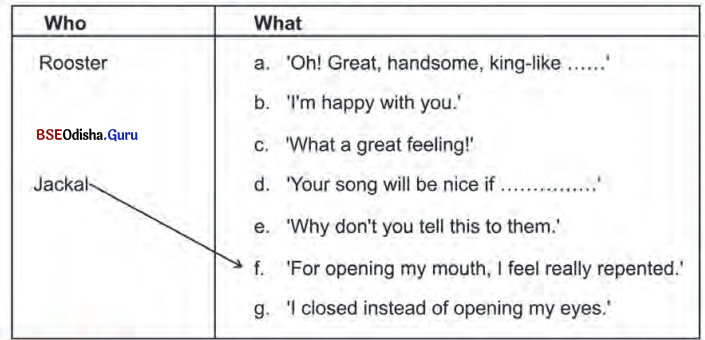
Answer:

![]()
Session – 5 (ପଞ୍ଚମ ପର୍ଯ୍ୟାୟ)
3. Listening (ଶ୍ରବଣ):
(a) Your teacher will read aloud some words from the list below. Tick those words which your teacher reads aloud. (ନିମ୍ନ ତାଲିକାରେ ଥିବା ଶବ୍ଦଗୁଡ଼ିକରୁ ତୁମ ଶିକ୍ଷକ କେତୋଟିକୁ ଉଚ୍ଚ ପାଟିରେ ପଢ଼ିବେ । ସେଗୁଡ଼ିକୁ ଟିକ୍ ଚିହ୍ନଦ୍ଵାରା ଦର୍ଶାଅ ।)
[handsome (‘d’ is silent), beautiful, problem, caught, neighbors, behind, instead, believe, repented]
(ହାଣ୍ଡସମ୍, ବିୟୁଟିଫୁଲ୍, ପ୍ରୋବ୍ଲେମ୍, କଅଟ୍, ନାଇବରସ୍, ବିହାଇଣ୍ଡ୍, ଇନ୍ଷ୍ଟେଡ୍, ବିଲିଭ୍, ରିପେଣ୍ଟେଡ୍)
(b) Your teacher will read aloud paragraph-3 (SGP-2). Listen to him / her and fill in the gaps. (ତୁମ ଶିକ୍ଷକ ତୃତୀୟ ଅନୁଚ୍ଛେଦଟିକୁ ପଠନ କରିବେ । ମନଯୋଗ ପୂର୍ବକ ଶୁଣି ଶୂନ୍ୟସ୍ଥାନ ପୂରଣ କର ।)
The _________ of the rooster chased _________. His _________ and sons joined _________. Also _________ his neighbors. But the _________was much _________of those _________ behind.
Answer:
The owner of the rooster chased behind. His wife and sons joined him. Also joined his neighbors. But the jackal was much ahead of those running behind.
4. Speaking (କହିବା):
(a) Chain-drill: ‘I was a fool to believe your lies.
(ଶୃଙ୍ଖଳ-ଅଭ୍ୟାସ : ମୁଁ ଗୋଟେ ବୋକା, ତୁମ ମିଛକୁ ବିଶ୍ଵାସ କଲି ।)
(b) Dialogue : Rehearsal[ Teacher vs. students , students vs. students, reading aloud the dialogues]
(ସଂଳାପ : ଶିକ୍ଷକ ଓ ଛାତ୍ରମାନେ, ଛାତ୍ରଛାତ୍ରୀ ଓ ଶିକ୍ଷକ ରୂପ କଥନ କରିବେ ।)
Jackal : I’m a fool.
(କୋକିଶିଆଳ: ମୁଁ ଗୋଟେ ବୋକା ।)
Rooster: I’m a fool too.
(ଗଞ୍ଜା: ମୁଁ ମଧ୍ୟ ଗୋଟେ ବୋକା ।)
Jackal : I opened my mouth.
(କୋକିଶିଆଳ: ମୁଁ ମୋ ପାଟି ମେଲା କଲି ।)
RoosterS I closed my eyes.
(ଗଞ୍ଜା: ମୁଁ ମୋ ଆଖୁ ବନ୍ଦ କଲି ।)
Jackal : You told lies.
( କୋକିଶିଆଳ : ତୁମେ ମିଛ କହିଲ ।)
Rooster: You too told lies.
(ଗଞ୍ଜା : ତୁମେ ମଧ୍ଯ ମିଛ କହିଲ ।)
(c) Words with ‘ie, ee, ei, ea, oo’ in spelling are generally spoken with a long sound taking more time. Given below are some such words from the lesson. Your teacher will read aloud each word, and you will repeat after him/her. (ଶିକ୍ଷକ କେତେକ ଶବ୍ଦ ଉଚ୍ଚାରଣ କରିବେ । ତୁମେ ତାଙ୍କ ସହିତ ସ୍ବର ମିଳାଇ ଉଚ୍ଚାରଣ କର ।)
[rooster, fool doodle , feel , free , believe, receive, repeat] (ରୁସ୍ତର, ଫୁଉଲ୍, ଡୋଡୋଲ୍, ଫିଇଲ୍, ଫ୍ରିଇ, ବିଲିଇଭ୍, ରିସିଲଭ୍, ରିଇପିଟ୍)
![]()
Session – 6 (ଷଷ୍ଠ ପର୍ଯ୍ୟାୟ)
5. Vocabulary (ଶବ୍ଦସମ୍ଭାର) :
(a) English spelling is difficult and tricky. One way of learning to spell is the four-step method: look>cover>write>verify. Learn the spelling of the following words from the lesson following the four-step method. (ଇଂରାଜୀ ଶବ୍ଦକୁ ଆୟତ୍ତ କରିବାରେ ଅନୁସରଣ କର-ଦେଖ > ଅତିକ୍ରମ କର > ଲେଖ > ପରଖ ।)
[beautiful, handsome, problem, neighbor, believe, instead, repent]
(b) Word Scramble (ଶବ୍ଦଗଠନ ଅସଜଡ଼ା ଅକ୍ଷରକୁ ନେଇ):
Find words from the scramble. In some cases, you may get two words.

Answer:
dre red (colour – ରଙ୍ଗ)
gib big (size – ଆକାର)
yrt try (begin with ‘t’ – t ରେ ଆରମ୍ଭ)
yee eye (body part – ଶରୀରର ଅଂଶ)
yad day (opposite of night – ରାତିର ବିପରୀତ)
yas say (begins with ‘s’ S ଲଗାଇ ଆରମ୍ଭ)
lyf fly (cock can but jackal cann’t – ଗଞ୍ଜା କରିପାରେ କୋକିଶିଆଳ କରିପାରେ ନାହିଁ)
aet eat (begins with ‘e’ e ଲଗାଇ ଆରମ୍ଭ)
6. Usage (ବ୍ୟବହାର) :
(a) Combine two sentences into one. One is done for you.
(ଦୁଇଟି ବାକ୍ୟକୁ ଯୋଡ଼ି ଗୋଟିଏ ବାକ୍ୟରେ ପ୍ରକାଶ କର ।)
(i) The rooster sang. It closed its eyes.
Answer:
The rooster sang closing its eyes.
(ii) The rooster sang. It sat on a tree.
Answer:
The rooster sang sitting on a tree.
(iii) Rakesh took tea. He sat on a chair.
Answer:
Rakesh took tea sitting on a chair.
(iv) Rabi went home. He rode on a bicycle.
Answer:
Rabi went home riding on a bicycle.
(v) The cat caught the rat. It climbed up the tree.
Answer:
The cat caught the rat climbing up the tree.
(vi) The jackal ran. It caught the rooster by its neck.
Answer:
The jackal ran catching the rooster by its neck.
(b) These sentences can also be written, beginning with the second part of the sentence. (ପୂର୍ବୋକ୍ତ ବାକ୍ୟଗୁଡ଼ିକୁ ବଦଳାଇ ଲେଖ । ଶେଷୋକ୍ତ ଅଂଶକୁ ପ୍ରଥମେ ଆରମ୍ଭ କରି ।)
Example :
Closing its eyes, the rooster sang.
Write all the sentences of 6(a) in this way.
___________________________________________
___________________________________________
___________________________________________
___________________________________________
Answer:
Answer:
(i) Closing its eyes, the rooster sang.
(ii) Sitting on a tree, the rooster sang.
(iii) Sitting on a chair, Rakesh took tea.
(iv) Riding on a bicycle, Rabi went home.
(v) Climbing up the tree, the cat caught the rat.
(vi) Catching the rooster by its neck, the jackal ran.’
![]()
Session – 7 (ସପ୍ତମ ପର୍ଯ୍ୟାୟ):
7. Writing (ଲିଖନାତ୍ମକ)
(a) Write answers to the following questions.
(i) What is the story about?
(ଗପଟି କେଉଁ ବିଷୟରେ ?)
Answer:
The story is about the rooster and the jackal.
(ii) What did the jackal ask the rooster to do ?
(କୋକିଶିଆଳ ଗଞ୍ଜାକୁ କ’ଣ କରିବାକୁ କହିଲା ?)
Answer:
The jackal asked the rooster to sing closing its eyes.
(iii) The rooster sang closing its eyes. What did the jackal do?
(ଗଞ୍ଜା ତା’ର ଆଖୁ ବନ୍ଦ କରି ଗୀତ ଗାଇଲା । କୋକିଶିଆଳ କ’ଣ କଲା ?)
Answer:
The jackal caught the rooster, his prey (ଶିକାର) by its neck whenever it started singing closing its eyes.
(iv) The jackal opened its mouth. What did the rooster do?
(କୋକିଶିଆଳ ତା’ର ପାଟି ଖୋଲିଲା । ଗଞ୍ଜାଟି କ’ଣ କଲା ?)
Answer:
The rooster freed itself from the jackal and flew up to a tree as soon as it (the jackal) opened its mouth.
(b) Given below is what the rooster told another rooster after the incident. Read what it said and fill in the gaps consulting the text. (ଘଟଣା ଘଟିଲା ପରେ ଗଞ୍ଜାଟି ଆଉ ଗୋଟିଏ ଗଞ୍ଜାକୁ କହିଲା । ପାଠ୍ୟ ଅନୁସରଣରେ ନିମ୍ନ ଶୂନ୍ୟସ୍ଥାନଗୁଡ଼ିକୁ ପୂରଣ କର ।)
Do you know what happened the other day? I was singing in the morning. A jackal came. He told me to sing ____________. I closed my _________ and _________. The jackal caught me by ___________ and ran away. My master, his ___________and ___________and his _________ chased the jackal. The jackal was much ahead. There was little chance of catching him. So I thought of a plan. I said to the jackal, “I’m happy with you. Why should they chase? Tell them this.” He _________ his _________to tell this. I quickly _________up on to the _________.
Answer:
Do you know what happened the other day? I was singing in the morning. A jackal came. He told me to sing closing my eyes. I closed my eyes and sang. The jackal caught me by my neck and ran away. My master, his wife and sons, and his neighbors chased the jackal. The jackal was much ahead. There was little chance of catching him. So I thought of a plan. I said to the jackal, “I’m happy with you. Why should they chase? Tell them this.” He opened his mouth to tell this. I quickly flew up onto the tree.
![]()
(c) You know what a rooster told another rooster about the incident. Consult the text and write what the jackal said to another jackal after the incident. (ତୁମେ ଜାଣିଲ ଗଞ୍ଜାଟି ଅନ୍ୟ ଗଞ୍ଜାଟିକୁ କ’ଣ କହିଲା । ପାଠ୍ୟ ଅନୁସରଣରେ ସେହିପରି କୋକିଶିଆଳଟି ଆଉ ଗୋଟିଏ କୋକିଶିଆଳକୁ କ’ଣ କହିଲା ?)
Do you know __________________________
_________________________________________
_________________________________________
_________________________________________
Answer:
Do you know I met a rooster singing in the early morning with open eyes? Cunningly (ଚାଲାକିରେ ) I told it to sing closing its eyes for it would be better, clear, and louder. As the rooster did so I caught it by its neck and ran away. Its owner, his wife, sons, and neighbors ran after me. The rooster told it had a nice feeling. It told its master was a miser and did not give it much to eat. It requested me to tell this to its master. As I opened my mouth to speak, it flew away up to a tree. I missed my prey (ଶିକାର).
8. Mental Talk (ମାନସ କଥନ) :
‘T was a fool to believe your lies.”
(ମନେ ମନେ – ମୁଁ ତୁମ ମିଛକୁ ବିଶ୍ଵାସ କରି ବୋକା ବନିଗଲି ।)
9. Let’s Think (ଚାଲ ଚିନ୍ତାମଗ୍ନ ହେବା):
We should know when to shut our mouths and to close or open our eyes.
(ଆମେ ଜାଣିବା ଉଚିତ ଯେ କେତେବେଳେ ପାଟି ବନ୍ଦ ରଖିବା ଏବଂ କେତେବେଳେ ଆଖୁ ଖୋଲା ରଖୁବା ବା ବନ୍ଦ ରଖିବା ।)
BSE Odisha 7th Class English Solutions Lesson 2 The Jackal and the Rooster Important Questions and Answers
(A) Choose the right answer from the options.
Question 1.
The rooster looked like a king with its ____________.
(i) power
(ii) large kingdom
(iii) large army
(iv) beautiful red crown
Answer:
(iv) beautiful red crown
Question 2.
Rooster always sang ___________.
(i) keeping its mouth open
(ii) keeping its eyes open
(iii) keeping its body open
(iv) None of the above
Answer:
(ii) keeping its eyes open
Question 3.
“Oh, great handsome king-like rooster !” Who said this?
(i) The jackal
(ii) Other animals
(iii) The hen
(iv) Both the jackal and other animals
Answer:
(i) The jackal
![]()
(B) Answer the following questions.
Question 1.
How did the rooster befool the jackal?
Answer:
The jackal was cunning enough to catch the rooster, but he was befooled when he opened his mouth listening to his praise from the rooster. The rooster flew up to a tree and freed itself.
Question 2.
What did the owner of the rooster do when he saw the jackal carrying away his rooster?
Answer:
The owner of the rooster saw the jackal carrying away his rooster. He, with his sons, wife, and neighbors chased behind, but they could not catch the jackal.
Question 3.
How did the rooster blame its owner?
Answer:
The rooster told its owner was a miser and he never gave it anything to eat. So it didn’t like its owner.
(C) Re-arrange the jumbled words to make meaningful sentences.
1. rooster / very / was / there / a / big/handsome / and
2. red / he / like / king/a / looked / with / beautiful / its / crown
3. king / like / he / felt / also / a
4. open / it / keeping / sang / his / but / eyes
5. ran / and / away / the / caught / jackal / the / its / rooster / by / neck
Answer:
1. There was a very big and handsome rooster.
2. He looked like a king with its beautiful red crown.
3. He also felt like a king.
4. But it sang keeping his eyes open.
5. The jackal caught the rooster by its neck and ran away.
![]()
(D) Find whether True or False.
1. He gives me everything to eat.
2. The jackal was not much ahead of those running behind.
3. He closed his eyes and sang louder and clearer.
4. The jackal felt unhappy with the words of the rooster.
5. The jackal saw the rooster singing every day early in the morning.
Answer:
(1) False (2) False (3) True (4) False (5) True
BSE Odisha 7th Class English Solutions Part – I

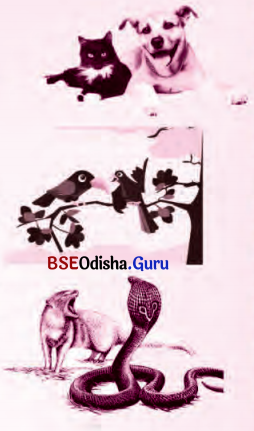 → Socialisation (ସାମାଜିକୀକରଣ) :
→ Socialisation (ସାମାଜିକୀକରଣ) :